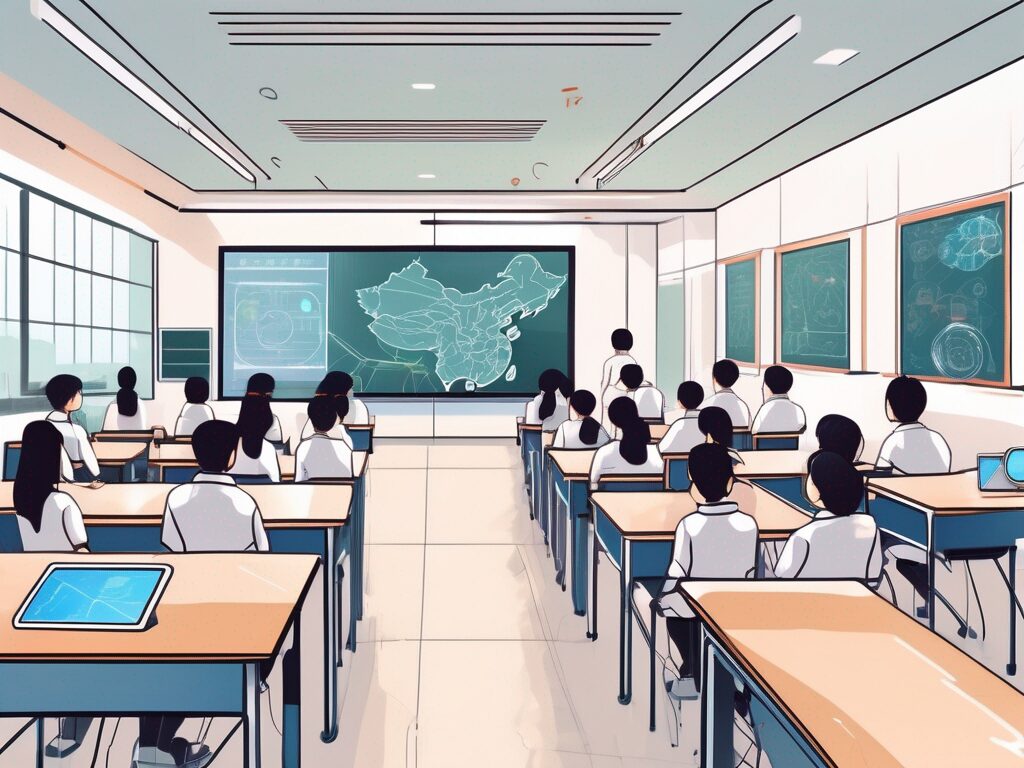In the ever-evolving landscape of education, modern teaching methods have become increasingly important. Particularly in China, where the introduction of the International Quality Teaching Standards (IQTS) has revolutionised the educational system, these innovative techniques are being embraced with open arms. But what exactly are these methods, and how are they being implemented in Chinese classrooms? Let’s explore four such techniques that are making waves in the realm of education.
1. Collaborative Learning
Collaborative learning is a teaching method that encourages students to work together to solve problems or complete tasks. This approach is not just about group work; it’s about fostering a sense of community, promoting interaction, and developing critical thinking skills.
In China, this method has been particularly effective in classrooms where IQTS is implemented. The standards emphasise the importance of collaboration in learning, and Chinese educators have taken this to heart. They’ve found that when students work together, they are more engaged, more likely to understand complex concepts, and more likely to retain information.
Think of it like a football team preparing for a big match. Each player has a role to play, but they must work together to achieve their goal. Similarly, in a collaborative learning environment, each student contributes to the learning process, leading to a more enriching educational experience.
2. Technology-Integrated Learning
As the digital age continues to evolve, technology has become an integral part of modern teaching methods. In China, where technology is deeply ingrained in daily life, it’s only natural that it has found its way into the classroom.
From interactive whiteboards to educational apps, technology-integrated learning is transforming the way Chinese students learn. It’s not just about making learning more fun; it’s about making it more effective. With the help of technology, teachers can present information in a more engaging way, and students can access a wealth of resources at their fingertips.
Imagine trying to learn about the solar system by reading a textbook. Now, imagine exploring the solar system through a virtual reality headset. Which experience do you think would be more memorable? That’s the power of technology-integrated learning.
3. Inquiry-Based Learning
Inquiry-based learning is another modern teaching method that’s gaining traction in China. This approach encourages students to ask questions, explore ideas, and seek out answers. It’s about nurturing curiosity and promoting a love of learning.
Under the IQTS, Chinese teachers are encouraged to create a learning environment where questions are welcomed and curiosity is celebrated. This approach has been shown to improve critical thinking skills, increase engagement, and foster a deeper understanding of the subject matter.
It’s like being a detective on a case. You’re not just passively receiving information; you’re actively seeking it out. This active engagement makes the learning process more meaningful and enjoyable.
4. Differentiated Instruction
Differentiated instruction is a teaching method that involves tailoring instruction to meet the individual needs of each student. In a diverse classroom, it’s important to recognise that not all students learn in the same way. Some may be visual learners, while others may prefer a more hands-on approach.
In China, differentiated instruction has become a key component of the IQTS. Chinese educators are encouraged to adapt their teaching methods to cater to the diverse needs of their students. This approach not only ensures that all students can access the curriculum, but it also allows them to learn in a way that suits them best.
Think of it like cooking a meal for a group of friends. Some may prefer spicy food, while others may have dietary restrictions. By tailoring the meal to suit everyone’s preferences, you ensure that everyone can enjoy the meal. Similarly, by tailoring instruction to suit each student’s learning style, you ensure that everyone can benefit from the learning process.
In conclusion, modern teaching methods like collaborative learning, technology-integrated learning, inquiry-based learning, and differentiated instruction are transforming education in China. Under the IQTS, these methods are being embraced and implemented, leading to a more engaging, effective, and enjoyable learning experience for Chinese students.
Advance Your Teaching Career with iQTS at UWE
As you embrace modern teaching methods in line with IQTS, consider taking your professional development to the next level with The IQTS at UWE. Our International Qualified Teacher Status (iQTS) programme is designed to help educators like you overcome barriers, enhance career progression, connect with a global community, and gain a comprehensive understanding of international curricula. Join the ranks of satisfied educators who have seen a 45% increase in promotion rates and a 30% salary boost. Don’t let isolation or underqualification hold you back. Make Your Next Step towards a fulfilling international teaching career with our flexible online study options. Enroll in the iQTS programme today and transform your potential into success.

